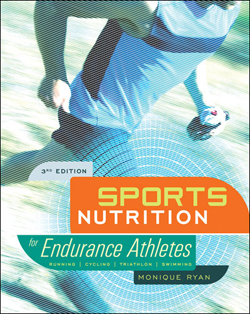Nationwide Teleconsulting • Sports Nutrition E-Programs


Category Archives: Sports Nutrition Blog
Nutrition strategy for time trial performance
July 20, 2013
Researchers investigated whether an athlete’s self chosen nutrition strategy (fuel how you feel) versus a scientifically determined strategy(a plan) led to different performance outcomes for a time trial conducted after endurance exercise. In the scientifically devised plan study subjects consumed 1000 ml per hour in portions of 250 ml every 15 min, 0.5 g sodium, 60 g glucose, 30 Continue Reading »
Tour de France Nutrition
July 17, 2013
With Stage 17 of the Tour de France completed it is hard not to appreciate how hard the cyclists must work to fuel before the start, fuel and hydrate during the race, and refuel after the race. Fueling and hydrating during the race may pose the toughest challenge. A recent study took a look at what Continue Reading »
Fueling During Training
July 5, 2013
Now that you know your sweat rate for specific workouts and in various conditions (keep checking if you are not sure), it is time to think about fluid options and to develop your hydration skills during training. For short workouts lasting only 45 to 60 minutes, water should be fine. However, if you train longer, Continue Reading »
Results of Your Sweat Check?
June 28, 2013
With training season and summer finally here, it is time to get serious about understanding your fueling, hydration, and electorlyte requirements during training, whether on the bike or during long runs. Let’s start with fluid. If you have already completed one sweat check, complete another, and even a few more after that. Remember every pound Continue Reading »
Time for a sweat check!
May 17, 2013
With the arrival of warmer weather and the 2013 training season for endurance sports in full gear, it is time to do a check to determine your current sweat rate. When you have your next scheduled workout lasting about 60 minutes, check your weight before and after training- preferably in the buff. Every pound of Continue Reading »
Athletes, It’s Time for a vitamin D check!

May 17, 2013
Do you know your blood vitamin D levels? Vitamin D is actually a hormone that performs many important functions in the body. In addition to its well known role in building bone, vitamin D may also protect us from many autoimmune conditions and certain cancers. With food sources of vitamin D being very limited, we Continue Reading »